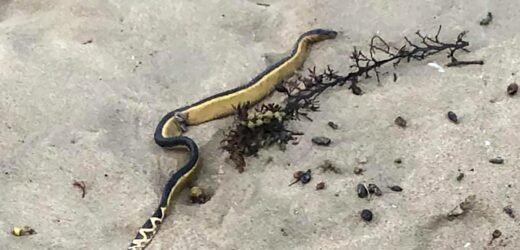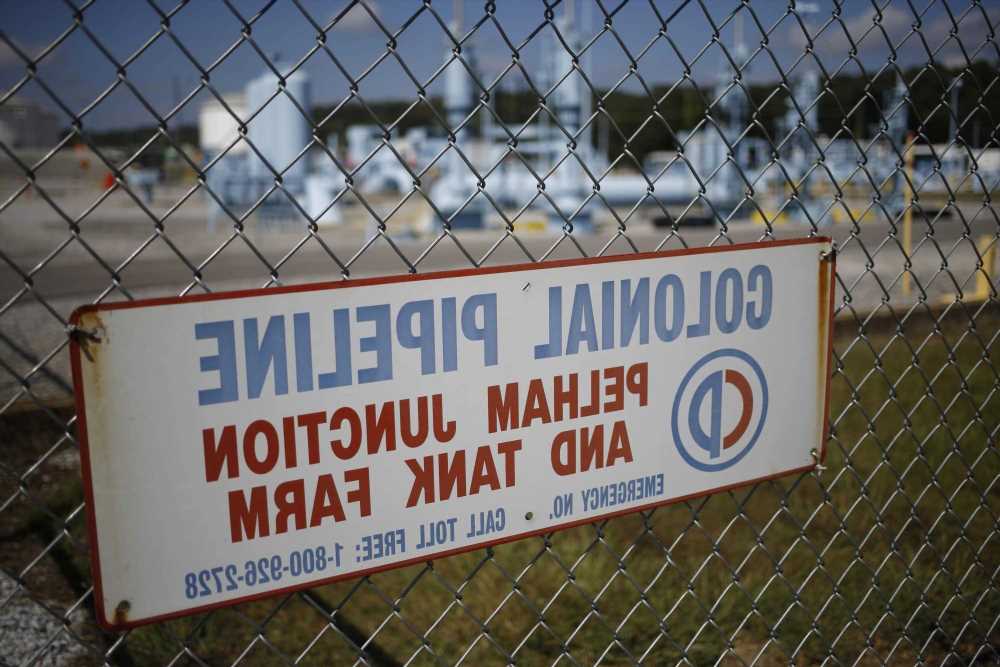A third deadly sea snake for which no anti-venom exists in New Zealand has turned up on the Manawatū coastline in the lower North Island.
A family group out looking for shells at Tangimoana Beach on the Manawatū Coast came across a highly venomous yellow-bellied sea snake in the high tide mark on Anzac Day.
The previous two “alive and wriggling” sea snakes have been found in Northland at Woolleys Bay on the Tutukaka Coast at the weekend and 10 days earlier at Tokerau Beach in Doubtless Bay.
The Herald has obtained videos of the sea snake from Tangimoana Beach in a bucket and the sea snake from Woolleys Bay wriggling in the sand.
It is the first time sea snakes have been found in New Zealand since April 2018 when one was found at Baylys Beach, near Dargaville.
An 11-year-old boy, who did not want to be named, said he was at Tangimoana Beach with two cousins and other family members when he came across a sea snake that was still alive.
He put it in a bag and drove back along the beach in a four-wheel drive to the local dairy to ask for a box and what it was.
A woman at the shop did a search on her mobile phone and told him it was a yellow-belly sea snake and not to get bitten by it.
The snake was put in a bucket of sea water, but after an hour long drive to a family home outside Palmerston North, the snake was dead.
“I didn’t know what do with it. I chopped it’s head off, put it in a bag and threw it out,” said the boy.
Sightings of the snakes, believed to breed in the tropical waters of the northern Tasman Sea, are fairly rare in New Zealand – only six to 10 are found a year.
Department of Conservation expert Clinton Duffy said yellow-belly sea snakes have been recorded as far south as Cook Strait in the past, but most are concentrated in the upper half of the North Island.
The first marine reptiles recorded in New Zealand were three yellow-belly sea snakes at Hokianga in 1837.
Duffy said people should not approach or handle the sea snakes as their toxin is highly dangerous. No anti-venom is available in the country to treat sea snake bites, he said.
Anti-venom is expensive and has a short shelf-life. No one has yet been bitten.
“Don’t pick them up. Give them a wide berth. It takes a lot to provoke a yellow-bellied to bite, but if it does, it could well be deadly so it’s best to stay away and call 0800 DOCHOT as they are the responsibility of the Department of Conservation,” Duffy said.
A yellow-bellied sea snake’s powerful neurotoxin – delivered by small fangs in the back of its mouth – means their main source of food, fish, can evade an initial attack but will die shortly afterwards.
The sea snake is a biosecurity risk, although it is deemed native under the Wildlife Act 1953 – as it made its way here under its own steam.
Duffy said DoC would most likely cordon off the area around a found snake because they were not allowed to pick them up either – only qualified snake handlers were able to, and DoC employed none.
Yellow-bellied sea snakes are carried to New Zealand waters on warm currents from Australia and the Pacific Islands. New Zealand waters are too cold for the snake to breed – which involves birthing live young, rather than eggs.
Source: Read Full Article

/cloudfront-ap-southeast-2.images.arcpublishing.com/nzme/OVO26MVMOOCZKV4YBII2KFVQS4.jpg)

